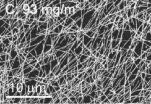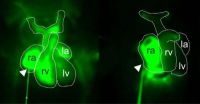(Press-News.org) Charlottesville, VA, January 29, 2013. The "July effect"—the notion that the influx of new residents and fellows at teaching hospitals in July of each year adversely affects patient care and outcomes—was examined in a very large data set of hospitalizations for patients undergoing spine surgery. Researchers at the Mayo Clinic (Rochester, MN) and the University of Virginia Health System (Charlottesville, VA) found a negligible effect on periprocedural outcomes among patients treated by spine surgery. Detailed results of their thorough study are furnished in the article "The effect of July admission on inpatient outcomes following spinal surgery. Clinical article," by Jennifer S. McDonald, Ph.D., Michelle J. Clarke, M.D., Gregory A. Helm, M.D., Ph.D., and David F. Kallmes, M.D., published today online, ahead of print, in the Journal of Neurosurgery: Spine.
To the authors' knowledge, this study is the largest of its kind, and its results confirm findings of many other smaller studies. The findings are particularly important to patients. Dr. McDonald states, "We hope that our findings will reassure patients that they are not at higher risk of medical complications if they undergo spinal surgery during July as compared to other times of the year."
The researchers searched the Nationwide Inpatient Sample (NIS), the largest publically available all-payer database of information on hospitalized patients in the United States, for the years 2001 through 2008. The NIS contains data from a large sample of hospitals that reflects approximately 20% of annual hospitalizations. The researchers scoured the database using diagnostic codes from the International Classification of Diseases, 9th Revision Clinical Modification to identify every case of spinal surgery related to spinal fusion, decompression, discectomy, or laminectomy. Data on patient demographics, diagnoses, and details of hospitalization, and data on hospital demographics (private or government ownership, urban or rural location, teaching or nonteaching facility, and size) were collected.
Almost one million spinal surgery hospitalizations were identified. Hospitalizations were broken down into admissions in July and admissions in other months. Patient subgroups were created for additional analyses focusing on patients who were sicker and had more complications, patients undergoing simple or more complicated surgeries, and patients undergoing elective surgery. The primary outcomes in this study were in-hospital mortality, discharge disposition (to home or a long-term facility), and postoperative complication. Length of stay and total costs of hospitalization were also examined. Outcomes were compared between July admissions and admissions during other months.
The researchers found that the incidences of all outcomes studied were higher in teaching hospitals than in nonteaching hospitals. In the teaching hospitals, small but statistically significant higher rates of postoperative infection and patient discharge to a long-term facility were found during July when compared with other months. These differences were very small in magnitude but significant due to the large sample size of the study. Patients who underwent complex surgical procedures in teaching hospitals in July were more likely to be discharged to a long-term facility or experience postoperative infection, but these differences were also very small in magnitude. In-hospital mortality and other postoperative complications did not differ according to the month of admission. In addition, no "July effect" was observed in higher-risk patients, patients who were admitted for elective surgery, or patients undergoing simple spinal procedures.
The authors conclude that their "study of nationwide hospitalizations over an 8-year period indicates that influx of new residents and fellows in July has a negligible effect on periprocedural outcomes following spinal surgery."
The article contains four tables and several graphs comparing data from teaching and non-teaching hospitals. There is also an appendix, only available online, that contains 16 additional tables showing the results of the thorough statistical analyses.
###
McDonald JS, Clarke MJ, Helm GA, Kallmes DF. The effect of July admission on inpatient outcomes following spinal surgery. Clinical article. Journal of Neurosurgery: Spine, published online, ahead of print, on January 29, 2013 (DOI: 10.3171/2012.12.SPINE12300).
Disclosure: The authors report no conflict of interest concerning the materials or methods used in this study or the findings specified in this paper.
For additional information, please contact:
Ms. Jo Ann M. Eliason, Communications Manager
Journal of Neurosurgery Publishing Group
One Morton Drive
Charlottesville, Virginia 22903
Email: jaeliason@thejns.org
Telephone 434-982-1209; Fax 434-924-2702
The Journal of Neurosurgery: Spine is a monthly peer-reviewed journal focused on neurosurgical approaches to treatment of diseases and disorders of the spine. It contains a variety of articles, including descriptions of preclinical and clinical research as well as case reports and technical notes. The Journal of Neurosurgery: Spine is one of four monthly journals published by the JNS Publishing Group, the scholarly journal division of the American Association of Neurological Surgeons, an association dedicated to advancing the specialty of neurological surgery in order to promote the highest quality of patient care. The Journal of Neurosurgery: Spine appears in print and on the Internet.
END
A large study published in PLOS Medicine on January 29, 2013, shows that the risk of future cardiovascular disease and death increased with severity of erectile dysfunction in men both with and without a history of cardiovascular disease. While previous studies have shown an association between ED and CVD risk, this study finds that the severity of ED corresponds to the increased risk of CVD hospitalization and all-cause mortality.
The study authors, Emily Banks (from the Australian National University) and colleagues, analyzed data from the Australian prospective cohort ...
Coral reefs build their structures by both producing and accumulating calcium carbonate, and this is essential for the maintenance and continued vertical growth capacity of reefs. An international research team has discovered that the amount of new carbonate being added by Caribbean coral reefs is now significantly below rates measured over recent geological timescales, and in some habitats is as much as 70% lower.
Coral reefs form some of the planet's most biologically diverse ecosystems, and provide valuable services to humans and wildlife. However, their ability to ...
Boston, MA—Most weight-loss plans center around a balance between caloric intake and energy expenditure. However, new research has shed light on a new factor that is necessary to shed pounds: timing. Researchers from Brigham and Women's Hospital (BWH), in collaboration with the University of Murcia and Tufts University, have found that it's not simply what you eat, but also when you eat, that may help with weight-loss regulation.
The study will be published on January 29, 2013 in the International Journal of Obesity.
"This is the first large-scale prospective study ...
ROCHESTER, Minn. -- The "July Effect" -- the notion that the influx of new residents and fellows at teaching hospitals each July makes that the worse time of year to be a patient -- seems to be a myth, according to new Mayo Clinic research that examined nearly 1 million hospitalizations for patients undergoing spine surgery from 2001 to 2008. Among those going under the knife, researchers discovered that the month surgery occurred had an insignificant impact on patient outcomes.
In addition, no substantial "July Effect" was observed in higher-risk patients, those admitted ...
BOSTON – A patient's relationship with his or her doctor has long been considered an important component of healing. Now, in a novel investigation in which physicians underwent brain scans while they believed they were actually treating patients, researchers have provided the first scientific evidence indicating that doctors truly can feel their patients' pain – and can also experience their relief following treatment.
Led by researchers at Massachusetts General Hospital (MGH) and the Program in Placebo Studies and Therapeutic Encounter (PiPS) at Beth Israel Deaconess ...
Scientists at The University of Texas MD Anderson Cancer Center have discovered the signaling pathway whereby a master regulator of cancer cell proteins – known as Src – leads to ovarian cancer progression when exposed to stress hormones. The researchers report in the current issue of Nature Communications that beta blocker drugs mitigate this effect and reduce cancer deaths by an average of 17 percent.
Src (pronounced "sarc," short for sarcoma) is a proto-oncogene – a normal gene that can become an oncogene due to increased expression – involved in the regulation of ...
FAIRFAX, Va.—The first outcome-based guidelines for interventional treatment of acute ischemic stroke—providing recommendations for rapid treatment—will benefit individuals suffering from brain attacks, often caused by artery-blocking blood clots. Representatives from the Society of Interventional Radiology and seven other medical societies created a multispecialty and international consensus on the metrics and benchmarks for processes of care and technical and clinical outcomes for stroke patients.
In February, the guidelines will be published first in SIR's Journal ...
This press release is available in German.
Found in flat screens, solar modules, or in new organic light-emitting diode (LED) displays, transparent electrodes have become ubiquitous. Typically, they consist of metal oxides like In2O3, SnO2, ZnO and TiO2.
But since raw materials like indium are becoming more and more costly, researchers have begun to look elsewhere for alternatives. A new review article by HZB scientist Dr. Klaus Ellmer, published in the renowned scientific journal Nature Photonics, is hoping to shed light on the different advantages and disadvantages ...
This press release is available in German.
Many different tissues and organs form from pluripotent stem cells during embryonic development. To date it had been known that these processes are controlled by transcription factors for specific tissues. Scientists from the Max Planck Institute for Molecular Genetics in Berlin, in collaboration with colleagues at MIT and the Broad Institute in Boston, have now been able to demonstrate that RNA molecules, which do not act as templates for protein synthesis, participate in these processes as well. The scientists knocked down ...
As influenza spreads through the northern hemisphere winter, Dr Linda Wakim and her colleagues in the Laboratory of Professor Jose Villadangos from the Department of Biochemistry and Molecular Biology, and the Department of Microbiology and Immunology, believe they have a new clue to why some people fight infections better than others.
The lab has been investigating the 'defensive devices' contained within the T- cells that are located on exposed body surfaces such as skin and mucosal surfaces to ward off infection. T-cells detect cells infected with viruses and kill ...

